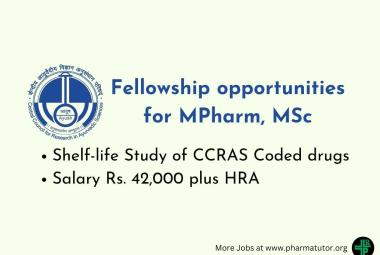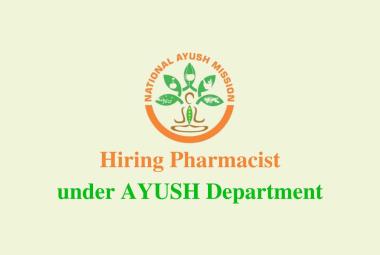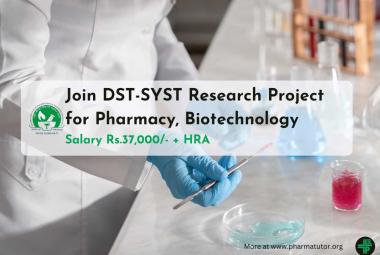ABOUT AUTHORS:
Keshava Murthy S R*, Shiva kumar
R&D Officer
Provimi Animal Nutrition India Pvt. Ltd.
Bangalore - 560 064 Karnataka INDIA
*keshavmurthysr86@gmail.com
ABSTRACT:
Reactive oxygen species(ROS) are free radicals which are generated from exogenous factors, where excessive ROS will result in Oxidative stress. These harmful free radicals generated continuously can be counteracted by the antioxidant defense system by the body. Multiple antioxidant methods were used to study the complete profile of an antioxidant compound so to establish a single antioxidant method which can determine the complete nature of antioxidant molecules is of great importance. CUPRAC method which involves the reduction of cupric ion to cuprous by antioxidant compound is found to be advantageous over other commonly followed antioxidant methods. The present review article includes detailed in vitro procedure, principle behind, application of this cuprac method.
REFERENCE ID: PHARMATUTOR-ART-1784
INTRODUCTION:
Reactive oxygen species are the species of oxygen which are unstable with a unpaired electron these include the superoxide ion (O2-.), hydroxyl radicals(HO.), peroxyl radicals (R00.), and the singlet oxygen radical (1O2) which are continuously generated under the physiological process in the body. These unpaired electrons are called free radicals that can interact with the important biomolecules like DNA, lipid, proteins can destabilize molecules and can damage the cell membrane by acquiring free electron from a stable lipid membrane (1).During stress condition leads to generation of more number of free radicals leads to imbalance between ROS and the anti-oxidative defense systems which results in oxidative stress. These oxidative stress can be overcome by supplementing antioxidant molecules or nutrients which increase antioxidant status, so determining the antioxidant capacity of is of highly importance.
Antioxidant molecules which are diverse in their nature can prevent the oxidizing nature of free radicals by reducing them. Therefore the role of antioxidant compounds is to prevent oxidation of biomolecules from the generated ROS in the cell mitochondria. Removal of these reactive oxygen species by antioxidant molecules can help in combating oxidative stress.(2)
Antioxidant molecules which is a multifaceted compound /diversified compound, a method to evaluate the total antioxidant capacity of the antioxidant molecules is of great importance. There is a need for the comprehensive method which is applicable to all types of complex compounds present in the nature. (3)
Antioxidant capacity assays were broadly classified in to two types based on their reaction mechanism between the antioxidant molecule and the substrate which undergoes oxidation are HAT based assay and Electron transfer based assay.
The CUPRAC (Cupric Ion Reducing Antioxidant Capacity) assay is a electron transfer based assay which is widely and popularly used method to determine the complete scavenging of free radicals i.e., total antioxidant capacity of a compound.This method which is based on the simple redox reaction between antioxidant and the free radicals, where the antioxidant activity can be measured by reduction cupric ions to cuprous ions by antioxidants.(4,5)
The following review will focus on the principle,methodology involved, application of this CUPRAC method to various antioxidant compounds and a their advantages over other antioxidant methods.
CLASSIFICATION OF ANTIOXIDANT METHODS
Based on the chemical reaction involved between the antioxidant compounds and the free radicals, antioxidant capacity assays are broadly classified in to two types.
(1) Hydrogen atom transfer (HAT) reaction based assays
(2) Electron transfer (ET) reaction based assays
HAT based assays: These assays measures/quantify the hydrogen atom donating ability of the antioxidant compounds by a proton-coupled electron transfer reaction(PCET), where it measures the chain breaking antioxidant capacity.These assays based on the reaction between synthetic free radical generator, oxidisable molecular probe and an oxidant where reaction kinetics is derived from the kinetic curve.
ET based assays: These assays measures the reducing capacity of the antioxidant compounds.Its based on the simple redox reaction, where antioxidant compounds reduce the free radicals and get themselves oxidized. Reduction by antioxidant compounds results in the color change of the reagent, which correlates with the antioxidant capacity, which is measured by the change in absorbance. (6)
HAT BASED ASSAYS
- Oxygen radical absorbance capacity (ORAC),
- total radical trapping antioxidant parameter (TRAP), and
- crocin bleaching assays.
- B-carotene–linoleic acid (linoleate) assay
- Lipid peroxidation inhibition capacity (LPIC) assay
- inhibited oxygen uptake (IOC)
- Nitric oxide radical inhibition activity
- Hydroxyl radical scavenging activity by p-NDA (p-butrisidunethyl aniline)
- Scavenging of H2O2 radicals
- ABTS radical scavenging method
- Scavenging of super oxide radical
ET BASED ASSAYS
- The total phenols assay by Folin-Ciocalteu reagent (FCR),
- Trolox equivalence antioxidant capacity (TEAC), using ABTS.
- ferric ion reducing antioxidant power (FRAP),
- total antioxidant potential” assay using a Cu (II) complex as an oxidant, (CUPRAC)- Copper (II) reduction capacity
- DPPH free radical scavenging assay.
- the total phenols assay by Folin-Ciocalteu reagent (FCR),
- reducing power assay
- N,N-dimethyl-p-Phenylenediamine (DMPD) assay
- Superoxide anion radical scavenging assay.
IN VITRO ANTIOXIDANT CAPACITY ASSAY:CUPRAC
Most commonly used antioxidant methods are not comparable as not all of the methods measure the same antioxidants equally. Since there is no single acceptable specific method for a wide group of antioxidants. A single assays which define the complete antioxidant properties/profile, would be appropriate for determining the total antioxidant capacity of the sample.
The novel in vitro antioxidant method based on an electron-transfer mechanism was named by research group(Resat apak et al.,), as CUPric ion Reducing Antioxidant Capacity), abbreviated as the CUPRAC method. These CUPRAC method has been widely used to measure the antioxidant capacity assays in food, plants, human serum, biological samples, dietary polyphenols, vitamins C and E etc., These CUPRAC assay, which is a simple, reliable, versatile and low cost, antioxidant capacity was compared and found advantageous over other methods.CUPRAC assays capability are popular due to their high speed and sensitivity and has been extensively validated, and provides useful information about the reducing capacity of the sample
CHEMISTRY BEHIND CUPRAC ASSAY:
Neocuproine is a aromatic heterocyclic compounds which can be used for the spectroscopic determination of copper.Neocuproine, a methylated phenanthroline derivative which chelates with the copper from cuprous chloride and forms a chromogenic redox reagent bis(neocuproine) copper(II) chloride, which is a novel reagent for the CUPRAC antioxidant capacity assays . This assay is based on reduction of Cu(II)-neocuproine complex to highly colored Cu(I)-neocuproine complex, which is measured at 450 nm absorbance.
The generation of cuprous ions (Cu1+) from cupric ions (Cu2+) is due to reduction of cupric chloride from cuprous chloride in the chromogenic redox reagent bis(neocuproine) copper(II) chloride by antioxidants compounds.These copper(I), is highly selective towards Neocuproine , the resulting Cu(I)-neocuproine complex consists of two molecules of neocuproine with one cuprous ion, with a maximum absorption at 454 nm(EmM 7.95).(5,7)
CUPRAC METHODOLOGY
This method involves mixing the antioxidant solution with aqueous copper(II) chloride, alcoholic neocuproine, and ammonium acetate aqueous buffer at pH 7, and subsequently measuring the developed absorbance at 450 nm after 30 min.(5)
REAGENTS:
1. Neocuproine (2,9-dimethyl-1,10-phenanthroline),
2. Trolox were supplied from sigma Aldrich Chemicals Co.
3. Ammonium acetate,
4. Copper(II) chloride,
PREPARATION OF SOLUTIONS
1. CuCl2 solution 1.0 x 10-2 M(10 mM):Was prepared by dissolving 0.4262g CuCl2. 2H2O in water, and diluting to 250mL.
2. Ammonium acetate buffer at pH=7.0, 1.0 M :Was prepared by dissolving 19.27g NH4Ac in water and diluting to 250mL.
3. Neocuproine (Nc) solution, 7.5x10-3 M(7.5 mM):Was prepared by dissolving 0.039 g Nc in 96% ethanol, and diluting to 25mL with ethanol. This solution should be prepared freshly.
4. Trolox, 1.0x10-3 M, (1 mM):Was prepared by dissolving 0.00626 g of the compound in 96% ethanol, and diluting to 50mL
The standard CUPRAC procedure involves the addition of Cuprous chloride along with Neocuproine reagent which form a Bathocuproine, a chromogenic Reducing agent, these reagent react with the antioxidant molecules, which converts cupric to cuprous to form a to form a Cu(1)- Nc complex.
The Method is summarized as below:
Add 1mL of 10mM CuCl2 solution , 1mL 7.5mM neocuproine, 1mL 1M NH4Ac + x mL of antioxidant neutral solution + Make up the final volume to 4.1mL using distilled water. incubate the reaction mixture under Normal condition(Room temperature) for 30 minutes, after incubation the absorbance was read at 450 nm.
EXPRESSING UNITS FOR CUPRAC ASSAY
The antioxidant activity for different compounds can be evaluated by different antioxidant methods can be expressed as millimole/micromole equivalent of reference standard used. The Antioxidant compounds which were used as reference standard includes vitamin E, ascorbic acid , gallic acid, BHA, BHT, Trolox etc. TE (Trolox equivalent) is a parameter widely used to measure antioxidant activity where Trolox is used as the standard reference to measure antioxidant capacity of the samples.
EC50 and IC 50 is also used to evaluate the antioxidant activity of the sample. Which were determined using the liner regression graph of concentration against the mean radical scavenging percentage of the antioxidant sample.
1. TE (TROLOX EQUIVALENT)
Trolox equivalent (TE) is a measurement of antioxidant strength based on Standard reference Trolox. Trolox (6-hydroxy-2,5,7,8-tetramethylchroman-2-carboxylic acid) is an synthetic antioxidant, which is a water soluble analogue derived from Vitamin E (α-tocopherol).Trolox can be used as a standard or control to measure antioxidant capacity for a number of antioxidant assays include
1. DPPH radical scavenging assay,
2. ABTS decolorization assay,
3. oxygen radical absorbance capacity (ORAC) ,
4. ferric reducing ability of plasma (FRAP) assays
5. CUPRAC etc.,
Antioxidants are being measured in terms of Trolox equivalents (TE) per gram of sample .e.g. micromole TE/ g of sample.(7)
The Trolox standard calibration curve was created by plotting a known concentration of Trolox versus absorbance at 570nm . A typical standard calibration curve is shown in Figure 1.
CALCULATION OF TEAC:
Sample TEAC can be calculated by using the equation obtained from the linear regression of the standard curve. Calculation of antioxidant capacity of the compounds as trolox equivalents (TEAC values) in the CUPRAC method as follows :
Sample calculation:
TEAC = εTR
---------
εT
Where
εTR = Epsilon value for Trolox in L mol-1 cm-1
εT = Epsilon value for test compounds in L mol-1 cm-1
TEAC = Trolox equivalent antioxidant capacity
2. EC50 AND IC50 VALUES
EC50 Value (Effective Concentration): EC50 value is defined as the effective concentration of antioxidant required for 50% scavenging of free radicals or the effective concentration at which the absorbance was 0.5 optical density (OD).
IC50 Value (Inhibitory Concentration): Concentration of sample at which the inhibition percentage reaches 50% is its IC50 value, it determine the amount of antioxidant needed for decreasing the radical concentration by 50%.
How to determine EC50 and IC50 VALUES
The concentration providing 50% antioxidant activity (EC50 Values) was determined from the plotted graph of scavenging activity percentage versus the concentration of compounds using Goal Seek (Microsoft Office Excel).Triplicate measurement were carried out for each antioxidant compounds and their % scavenging of radicals was calculated.(8,9,10)
The scavenging percentage of antioxidant compounds was calculated based on the percentage of radical scavenged on radicals using the following equation:
Scavenging (%) = (AC - AS) x 100
----------
AC
Where
AC-Absorbance of control
AS- Absorbance of sample.
Lower the EC50 value, higher is the antioxidant activity of the tested sample , it define that at a very less concentration the compounds/plant extract are showing the higher antioxidant activity. Similar to EC50 values, lower IC50 values corresponds to a higher antioxidant activity of the plant extract/compound.
The EC50 values and IC50 values were calculated for all the methods include
1. DPPH (2,2-diphenyl-1-picrylhydrazyl) radical-scavenging activity,
2. reducing power assay,
3. inhibition of b-carotene bleaching,
4. inhibition of oxidative hemolysis in erythrocytes induced by 2,20-azobis(2-amidinopropane) dihydrochloride (AAPH), and
5. inhibition of lipid peroxidation acid-reactive substances (TBARS).
Cuprac results were also evaluated by using EC50 values.
ADVANTAGES OF CUPRAC METHOD:
The novel reagent for the CUPRAC antioxidant capacity assay is bis(neocuproine) copper(II) chloride, This CUPRAC reagent was easily accessible,stable,selective low-cost, and responding to all antioxidants which induces redox reaction with the antioxidant compounds and determine the antioxidant capacity of various compounds.
CUPRAC method is advantageous over other electron-transfer based methods as follows:
1. The CUPRAC assay proved to be efficient for glutathione and thiol-type antioxidants due to electronic structure of Cu(II) facilitate faster kinetics ,where as FRAP method which is carried out at low pH found to be insensitive to thiol group of antioxidants due to chemical inertness by the half filled d-orbitals of high spin Fe(III) [7].
2. CUPRAC is superior with respect to pH which is close to the physiological pH condition (pH 7) unlike FRAP which is carried out at acidic condition , Folins methods which is carried out at alkaline conditions. The reaction at acidic and alkaline conditions will suppress or enhances the reduction capability of the sample thereby altering the reducing capability of the antioxidant compounds, Thus CUPRAC give definite values under physiological conditions.
3. CUPRAC method found to be superior method to analyse biological fluids over widely used folin ciocalteu , where cuprac method is applicable to both lipophilic serum antioxidants as well as hydrophilic serum antioxidants. Hence this method is useful in determing the total antioxidant capacity of the biological fluids.
4. Coloured reagent used in the antioxidant assay is usually sensitive towards light, humidity, pH , solvents like DPPH reagent , where as cuprac reagent- coloured chelate of Cu(I)-Nc found to be stable and insensitive to all these external parameters.
5. Proxidants are species that causes oxidation of biological macromolecule, which results in oxidative stress. In the ferric ion based assays such as FRAP produces Fe2+ , which can act as prooxidant by producing OH radicals by reacting with H2O2 .In the cuprac method Cu(I)-Nc is a stable chelate which doesn’t produce OH radicals from H2O2 hence it cannot act as a prooxidant in the antioxidant reaction.
APPLICATION OF CUPRAC METHOD IN FOOD, BIOLOGICAL FLUIDS AND PLANT EXTRACTS
Beneficial influence of many food stuffs, fruits, vegetables and beverages including, tea, coffee is attributed due to their plant derived antioxidants. To determine the complete profiling of antioxidant capacity in foodstuffs, beverages nutraceutical, dietary supplements etc., there is a need to develop standardized antioxidant capacity methods. Cuprac assay is the most commonly used in vitro determination of antioxidant activity of food constituents.
CUPRAC method is widely applicable for measuring the antioxidant capacity in various food compounds namely vitamins (vitamins C and E), dietary polyphenols, flavonoids, ascorbic acid in food extract. Measuring the antioxidant capacity of plant derived antioxidant by cuprac method in the wide range of matrices such as food, beverages, biological fluids and plant extracts, give the more appropriate biological activity information as it measures total antioxidant capacity of the matrices.(7)
Antioxidant activity of Biological fluids like serum, plasma antioxidants can be carried out using CUPRAC assay. These tests measures the combined effect of nonenzymatic antioxidants present in the biological fluids, hence it is of most important by providing the complete picture on the antioxidant status of the organism and their ability to counter act with free radicals/ reactive oxygen species (ROS). There is no single widely acceptable specific method for biological samples but cuprac method found to be useful in determing the biologically important molecules, like Ascorbic acid, α-tocopherol , reduced glutathione(GSH), uric acid, bilirubin, albumin -carotene, Irrespective of their chemical nature whether hydrophobic antioxidants or Hydrophilic antioxidants.(8,9)
Cuprac method is compared and results are correlated well with other spectrophotometric assays such as ferric reducing ability of plasma (FRAP), trolox equivalent antioxidant capacity (TEAC), and 1,1-diphenyl-2-picrylhydrazyl assay (DPPH). CUPRAC found to be advantages compared to other methodologies for antioxidant capacity assessment of plasma and urine samples. Now cuprac method is prominent to measure the total antioxidant capacity of biological fluids along with other commonly used methods
Polyphenols are a group of chemicals found in many fruits, vegetables, and other plants, such as, tea leaves and grapes etc. they posses antioxidant properties due to their phenolic –OH group.Polyphenol profiling can be done using this CUPRAC methods were various polyphenol groups which differs on number and position of –OH groups can be reduced/oxidized by CUPRAC reagent which determines the antioxidant capacity of the respective polyphenolic groups. Polyphenols, flavonoid containing plant extracts can be measured easily and antioxidant profiling of different plant extracts can be done.(10,11,12)
REFERENCES
1.Gunars Tirzitis and Grzegorz Bartosz. Determination of antiradical and antioxidant activity:basic principles and new insights: Review. Acta Biochimica Polonica ,Vol. 57, No. 1/2010 139–142.
2.Dejian huang, Boxin ou and Ronald l. Prior, REVIEWS: The Chemistry behind Antioxidant Capacity Assays, J. Agric. Food Chem. Vol. 53, No. 6, 2005, 1841-1856 .
3.Gokhan Zengin, Abdurrahman Aktumsek, Gokalp Ozmen Guler, Yavuz Selim Cakmak and Evren Yildiztugay., Antioxidant Properties of Methanolic Extract and Fatty Acid Composition of Centaurea urvillei DC. subsp. hayekiana Wagenitz ,Rec. Nat. Prod. 5:2 (2011) 123-132.
4.A.V.Badarinath*, K. Mallikarjuna RAo, C.Madhu Sudhana Chetty, S. Ramkanth, T.V.S Rajan, K.Gnanaprakash. A Review on In-vitro Antioxidant Methods:Comparisions, Correlations and Considerations Int.J. PharmTech Res.2010,2(2).
5.Resat Apak, Kubilay Gu¨c_lu¨ , Mustafa O¨ zyu¨rek, Saliha Esin C_elik, Mechanism of antioxidant capacity assays and the CUPRAC (cupric ion reducing antioxidant capacity) assay: Original Paper, Microchim Acta (2008) 160: 413–419.
6.Benzie I F F, Strain J J (1996) The ferric reducing ability of plasma (FRAP) as a measure of ‘‘antioxidant power’’: the FRAP assay. Anal Biochem 239: 70
7.Apak R, Güçlü K, Ozyürek M, Bektas Ofilu B, Bener M. Cupric ion reducing antioxidant capacity assay for food antioxidants: vitamins, polyphenolics, and flavonoids in food extracts.Methods Mol Biol. 2008;477:163-93.
8.Apak R, Gu¨c_lu¨ K,O¨ zyu¨rek M, Karademir S E, AltunM(2005), Total antioxidant capacity assay of human serum using copper(II)-neocuproine as chromogenic oxidant: The CUPRACmethod. Free Radical Res 39: 949
9.Joana P. N. RIBEIRO, Luís M. MAGALHÃES, Salette REIS, José L. F. C. LIMA, and Marcela A. SEGUNDO.High-throughput Total Cupric Ion Reducing Antioxidant Capacity of Biological Samples Determined Using Flow Injection Analysis and Microplate-based Methods.Analytical Sciences May 2011, VOL. 27 483-488
10.Re?at Apak 1, Kubilay Güçlü , Birsen Demirata , Mustafa Özyürek , Saliha Esin Çelik , Burcu Bekta?o?lu , K. I??l Berker and Dilek Özyurt, Comparative Evaluation of Various Total Antioxidant CapacityAssays Applied to Phenolic Compounds with the CUPRAC Assay: Review, Molecules 2007, 12, 1496-1547.
11.Apak R, Güçlü K, Özyürek M, Karademir SE, Erçag E (2006) The cupric ion reducing antioxidant capacity and polyphenolic content of some herbal teas. Int J Food Sci Nut 57:292–304 .
12.Lee G, Rossi MR, Coichev N, Moya HD (2011) The reduction of Cu(II)/neocuproine complexes by some polyphenols: total polyphenols determination in wine samples. Food Chem 126:679–686.
NOW YOU CAN ALSO PUBLISH YOUR ARTICLE ONLINE.
SUBMIT YOUR ARTICLE/PROJECT AT articles@pharmatutor.org
Subscribe to Pharmatutor Alerts by Email
FIND OUT MORE ARTICLES AT OUR DATABASE









